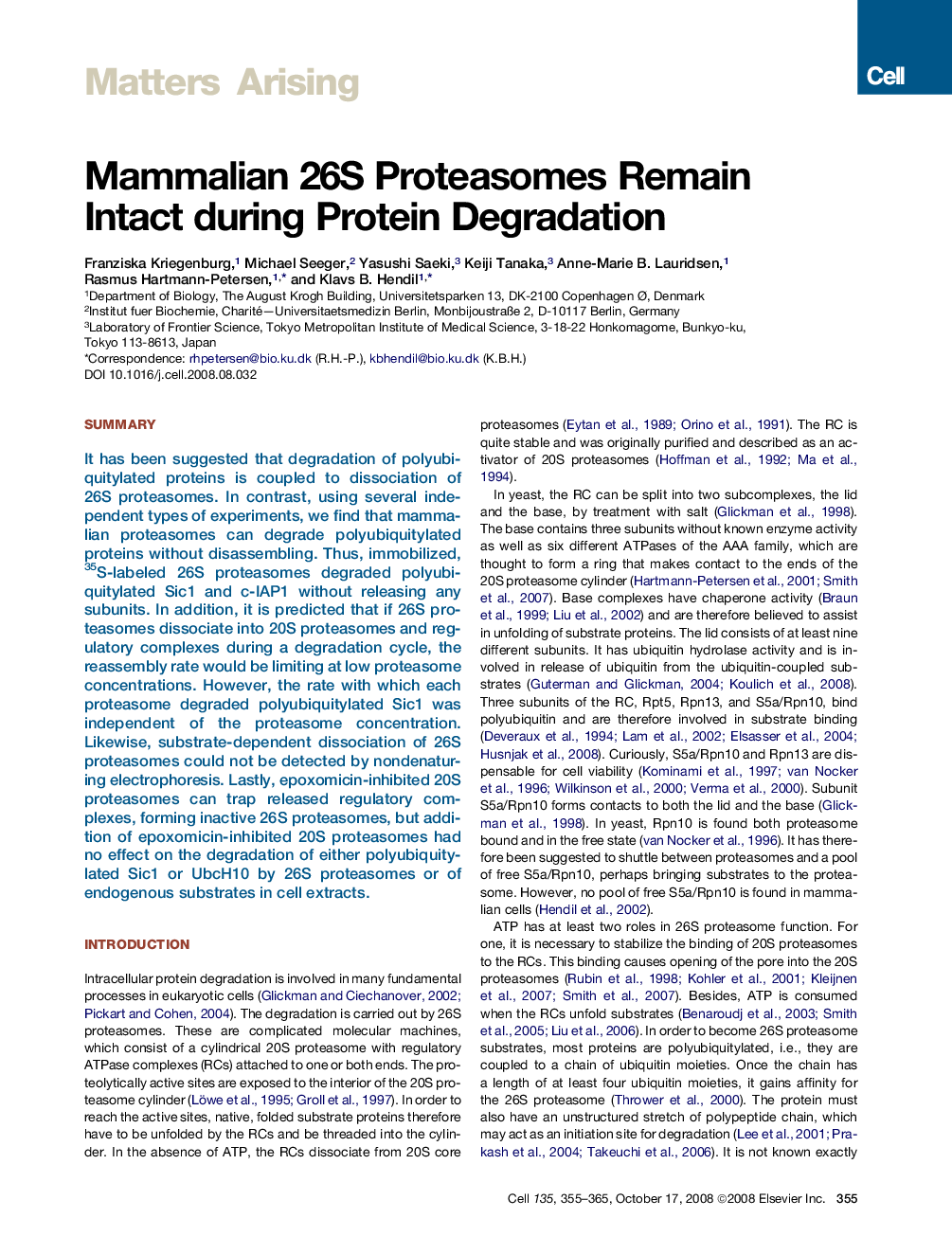| Article ID | Journal | Published Year | Pages | File Type |
|---|---|---|---|---|
| 2037304 | Cell | 2008 | 11 Pages |
SummaryIt has been suggested that degradation of polyubiquitylated proteins is coupled to dissociation of 26S proteasomes. In contrast, using several independent types of experiments, we find that mammalian proteasomes can degrade polyubiquitylated proteins without disassembling. Thus, immobilized, 35S-labeled 26S proteasomes degraded polyubiquitylated Sic1 and c-IAP1 without releasing any subunits. In addition, it is predicted that if 26S proteasomes dissociate into 20S proteasomes and regulatory complexes during a degradation cycle, the reassembly rate would be limiting at low proteasome concentrations. However, the rate with which each proteasome degraded polyubiquitylated Sic1 was independent of the proteasome concentration. Likewise, substrate-dependent dissociation of 26S proteasomes could not be detected by nondenaturing electrophoresis. Lastly, epoxomicin-inhibited 20S proteasomes can trap released regulatory complexes, forming inactive 26S proteasomes, but addition of epoxomicin-inhibited 20S proteasomes had no effect on the degradation of either polyubiquitylated Sic1 or UbcH10 by 26S proteasomes or of endogenous substrates in cell extracts.
